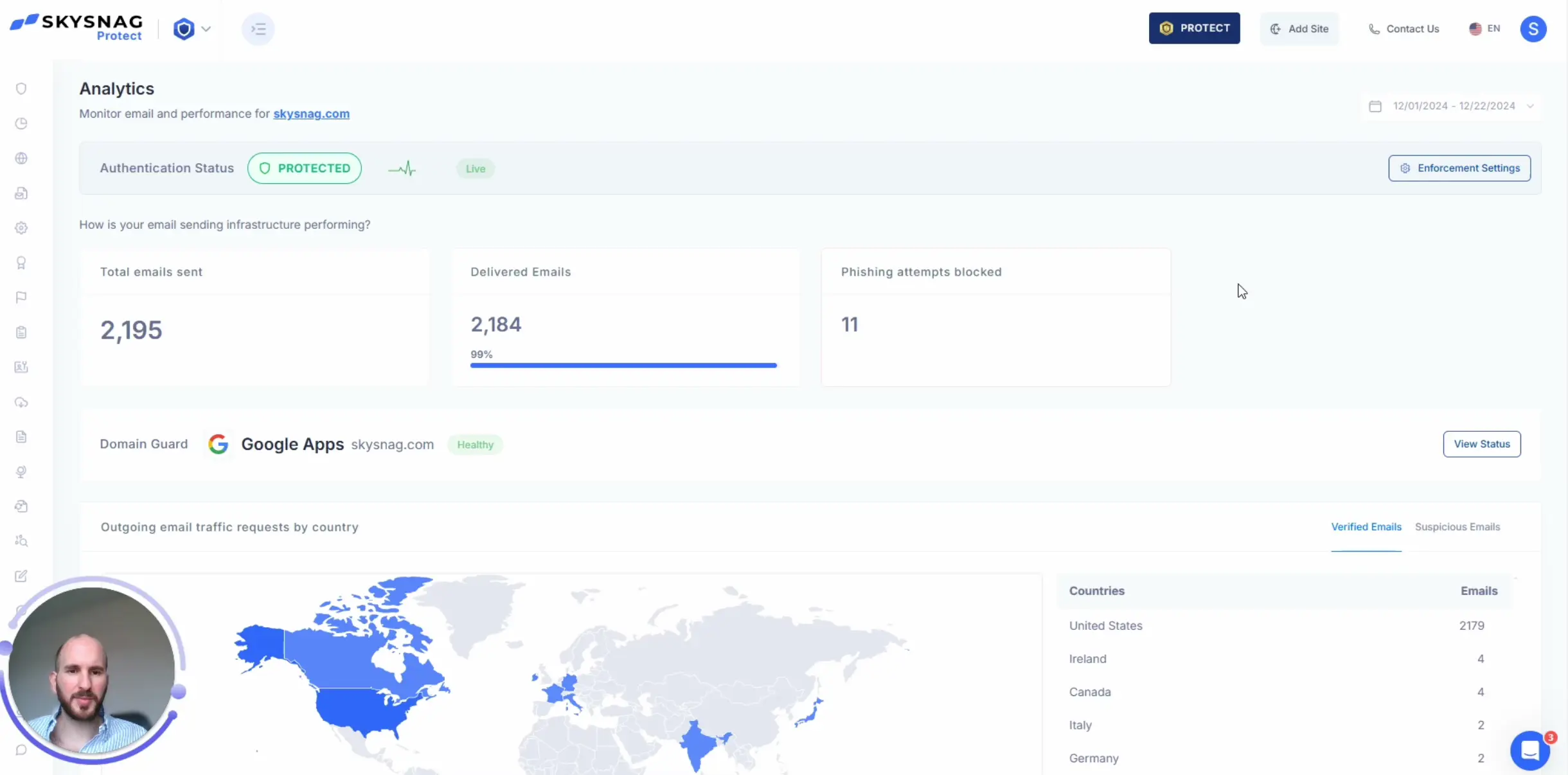DMARC Report Received from Amazon SES: What You Need to Know

Understanding DMARC Reports from Amazon SES
Amazon Simple Email Service (SES) is a cloud-based email-sending platform that provides powerful tools for managing email campaigns and transactional emails. Ensuring your domain’s emails are properly authenticated is key to maintaining sender reputation and avoiding email rejection or delivery to spam folders. DMARC reports from Amazon SES offer valuable insights into how recipient servers handle your emails, based on SPF and DKIM checks.
Key Components of Amazon SES DMARC Reports:
1. Source IP Address: This is the IP address Amazon SES uses to send your email. Monitoring this allows you to verify if your emails are being sent from authorized Amazon SES IPs or from malicious sources.
2. DKIM Alignment Results: Verifies if the DKIM signature in the email aligns with the domain specified in the “From” header. Amazon SES provides an easy way to sign outgoing emails with DKIM if configured properly.
3. SPF Alignment Results: Ensures that the sending IP from Amazon SES is authorized by your domain’s SPF record to send emails. Although Amazon SES simplifies SPF setup, it’s still important to monitor reports for any misalignments.
4. Disposition: This field informs you about how the recipient server handled the message (e.g., delivered, quarantined, or rejected), depending on the policy settings you’ve implemented for DMARC.
5. Message Count: Shows the number of emails that match specific criteria and were sent from a particular IP, helping to track large email campaigns or detect suspicious activities.
Automating DMARC Parsing for Amazon SES
Given the high volume of emails often sent through Amazon SES, manually parsing DMARC XML reports can be challenging. Automating this process with tools like Skysnag is essential to efficiently monitor and act on authentication results.
– Data Aggregation Across Providers: Amazon SES is typically one of many email providers. Skysnag aggregates DMARC reports not only from Amazon SES but also from other providers you may use, giving you a centralized, comprehensive view.
– Visualizing Critical Metrics: Tools like Skysnag present DMARC data from Amazon SES in dashboards that make it easier to understand DKIM/SPF success rates, unauthorized email attempts, and top sending IP addresses. This simplifies complex XML data into clear, actionable insights.
– Automated Incident Response: Skysnag offers real-time responses to issues flagged in DMARC reports. For example, if Amazon SES emails are failing DKIM or SPF checks, administrators can be automatically alerted to fix DNS records or block malicious IPs.
– Forensic Reporting: Some DMARC reports contain forensic information such as the full headers of failed emails. In Amazon SES environments, this can help pinpoint the root cause of delivery failures and protect your email reputation.
Ensuring Proper DMARC Alignment for Amazon SES
Ensuring alignment between DKIM and SPF with the domain in the “From” header is critical for emails sent through Amazon SES. Failure to achieve proper alignment can result in emails being quarantined or rejected, even if other email authentication checks pass.
Skysnag’s Custom Solutions for Amazon SES:
– DKIM Key Management: For Amazon SES users, Skysnag helps ensure DKIM signatures are correctly aligned with your domain. It alerts you if there are misalignments or if your key rotations are outdated, preventing failed DKIM checks.
– SPF Flattening: Amazon SES users often hit SPF lookup limits due to complex DNS records. Skysnag automatically flattens SPF records to optimize them, reducing the likelihood of DNS resolution failures.
– Policy Recommendations: Based on patterns seen in your Amazon SES DMARC reports, Skysnag can suggest DMARC policy updates, such as moving from “none” to “quarantine” or “reject,” to improve domain protection against spoofing and phishing attacks.
By automating DMARC management specifically for Amazon SES, tools like Skysnag help you maintain email security and optimize domain authentication settings, ensuring high deliverability and protecting your sender reputation.





